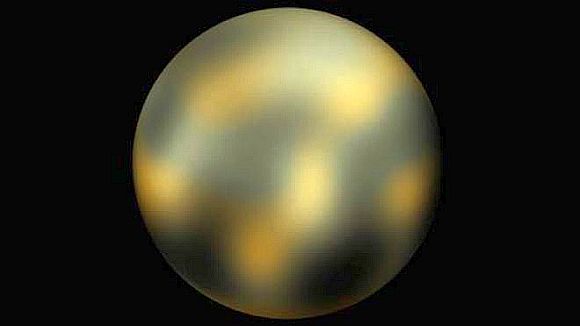
Planetary scientists claim that the Hubble telescope has found hints of "building blocks of life" on Pluto.
An international team, led by the Southwest Research Institute in Colorado, says the Hubble has actually detected hints of complex hydrocarbon molecules, crucial to the first life on Earth, on the surface of the dwarf planet Pluto.
The Cosmic Origins Spectroscope on the Hubble space telescope has discovered a strong "absorber" of ultraviolet light on the dwarf planet's rocky, icy surface -- suggesting hydrocarbons are lying there, the British media reported.
...

The chemicals detected on the surface might have been produced by sunlight or cosmic rays reacting with Pluto's surface ices, which include frozen methane, carbon monoxide and nitrogen, say the scientists.
They believe the presence of the chemicals would explain the body's red hue.
"This is an exciting finding. Plutonian hydrocarbons may be responsible for giving Pluto its ruddy colour," Alan Stern of the Southwest Research Institute, who led the team, was quoted as saying.
...

The scientists also found evidence that things on Pluto appear to be changing, with differences in the ultraviolet spectrum compared to Hubble measurements from the 1990s.
The changes may be simply be caused by looking at different terrains, or to other effects, such as changes in the surface related to a steep increase in the pressure of Pluto's atmosphere, they say.
"The discovery we made with Hubble reminds us that even more exciting discoveries about Pluto's composition and surface evolution are likely to be in store when NASA's New Horizons spacecraft arrives at Pluto in 2015," Stern added.
Click on NEXT to go further...
...